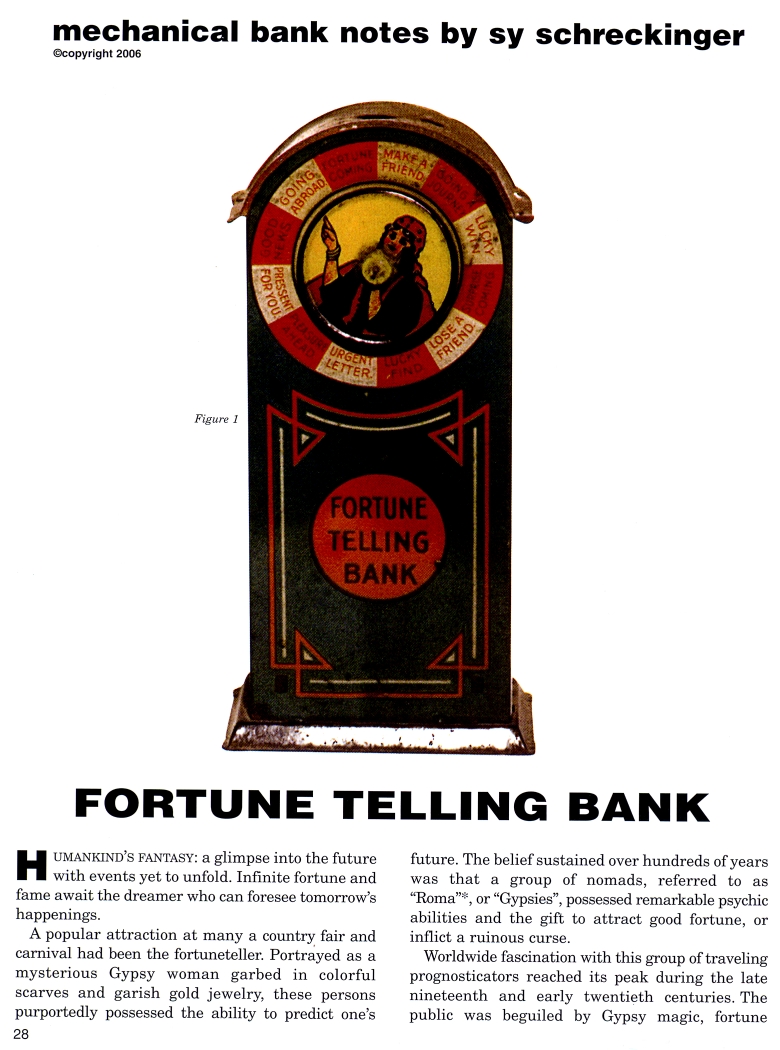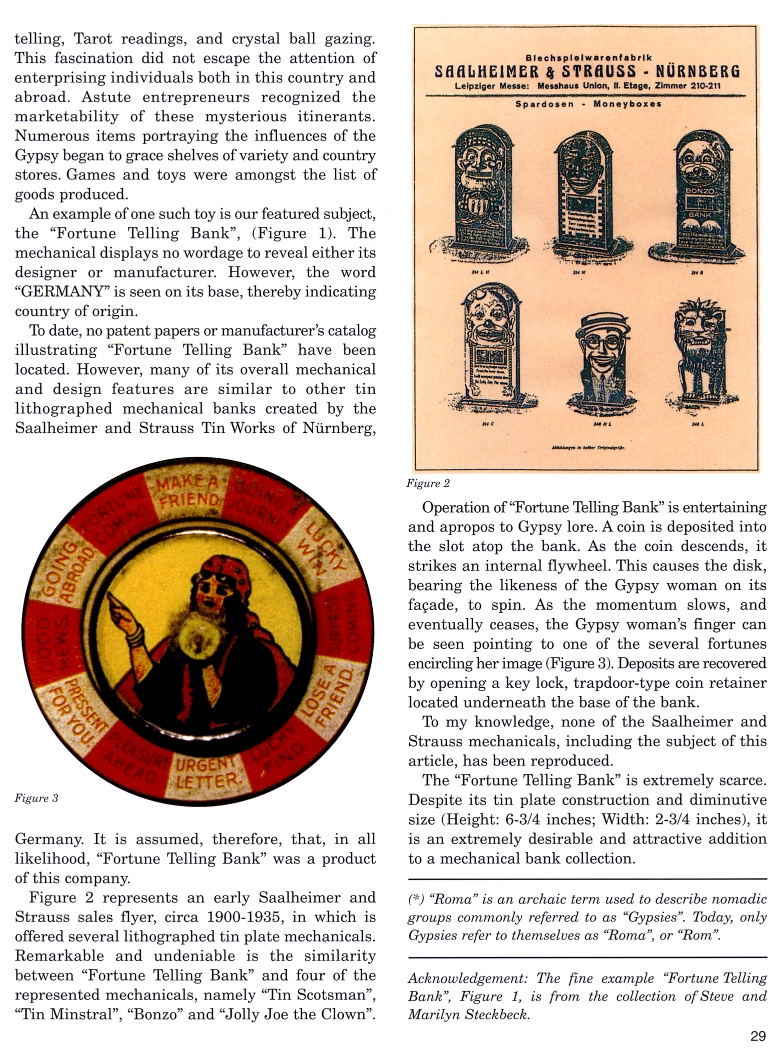|
Fortune Telling Bank
by Sy Schreckinger – ANTIQUE TOY WORLD Magazine – December, 2006
Humankind’s fantasy: a glimpse into the future
with events yet to unfold. Infinite fortune and fame await the dreamer who
can foresee tomorrow's happenings.
A popular attraction at many a country fair and carnival had been the
fortuneteller. Portrayed as a mysterious Gypsy woman garbed in colorful
scarves and garish gold jewelry, these persons purportedly possessed the
ability to predict one's future. The belief sustained over hundreds of
years was that a group of nomads, referred to as "Roma'', or "Gypsies",
possessed remarkable psychic abilities and the gift to attract good
fortune, or inflict a ruinous curse.
Worldwide fascination with this group of traveling prognosticators
reached its peak during the late nineteenth and early twentieth centuries.
The public was beguiled by Gypsy magic, fortune telling, Tarot readings,
and crystal ball gazing. This fascination did not escape the attention of
enterprising individuals both in this country and abroad. Astute
entrepreneurs recognized the marketability of these mysterious itinerants.
Numerous items portraying the influences of the Gypsy began to grace
shelves of variety and country stores. Games and toys were amongst the
list of goods produced.
An example of one such toy is our featured subject, the "Fortune
Telling Bank", (Figure 1). The mechanical displays no wordage to reveal
either its designer or manufacturer. However, the word "GERMANY" is seen
on its base, thereby indicating country of origin.
To date, no patent papers or manufacturer's catalog illustrating
"Fortune Telling Bank" have been located. However, many of its overall
mechanical and design features are similar to other tin lithographed
mechanical banks created by the Saalheimer and Strauss Tin Works of
Nurnberg, Germany. It is assumed, therefore, that, in all likelihood,
"Fortune Telling Bank" was a product of this company.
Figure 2 represents an early Saalheimer and Strauss sales flyer,
circa 1900-1935, in which is offered several lithographed tin plate
mechanicals. Remarkable and undeniable is the similarity between "Fortune
Telling Bank" and four of the represented mechanicals, namely "Tin
Scotsman", "Tin Minstral", "Bonzo" and "Jolly Joe the Clown".
Operation of "Fortune Telling Bank" is entertaining and apropos to
Gypsy lore. A coin is deposited into the slot atop the bank. As the coin
descends, it strikes an internal flywheel. This causes the disk, bearing
the likeness of the Gypsy woman on its facade, to spin. As the momentum
slows, and eventually ceases, the Gypsy woman's finger can be seen
pointing to one of the several fortunes encircling her image (Figure 3).
Deposits are recovered by opening a key lock, trapdoor-type coin retainer
located underneath the base of the bank.
To my knowledge, none of the Saalheimer and Strauss mechanicals,
including the subject of this article, has been reproduced.
The "Fortune Telling Bank" is extremely scarce. Despite its tin plate
construction and diminutive size (Height: 6-3/4 inches; Width: 2-3/4
inches), it is an extremely desirable and attractive addition to a
mechanical bank collection.
(*) "Roma" is an archaic term used to describe nomadic groups
commonly referred to as "Gypsies". Today, only Gypsies refer to themselves
as "Roma", or "Rom".
Acknowledgement: The fine example "Fortune Telling Bank", Figure 1,
is from the collection of Steve and Marilyn Steckbeck.
|

